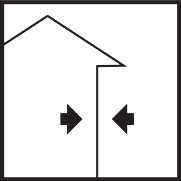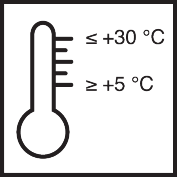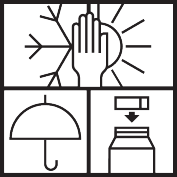Article No. 056306
Fast-setting repair mortar on a natural cement base for restoring joints and render
Product specifications
On delivery
28 days: ≥ 3.5 N/mm²
90 days: ≥ 4.0 N/mm²
The stated values represent typical product characteristics and are not to be construed as binding product specifications.
Field of application
- Repairing joints on monuments and listed buildings
- Brick and natural stone masonry
- Substitution and repair mortar
- For all old mortars made of natural cement
Properties
- Fast setting
- Slow development of strength
- Good flank adhesion
- Not hydrophobic
- This natural cement has been produced to the same formulation for more than 150 years and is also called Roman cement. It is based on a lime-marl from the Cretaceous period traditionally fired in a shaft kiln at low temperature.
-
Preparation
-
Substrate requirements
Clean, dust-free and capable of supporting a load.
-
Preparations
Pre-wet the substrate.
When supplementing, the layer thickness must be at least three times the largest grain size.
Fill deep gaps with priming mortar.
Joint depth min. 2 cm or double the joint width.
Sanded joint sides can lead to lateral detachment.
-
-
Application
-
Only mix as much mortar as can be used in approx. 30 minutes.
It is recommended to apply the mortar in two layers where possible.
After application, work with a profiling tool (e.g. tubing).
-
Application instructions
-
Once it has hardened, mortar must not be made workable again by adding either water or more wet mortar.
The type and duration of the reworking and surface treatment will influence the colour.
Slight deviations in colour between different batches are possible.
Protect wet mortar surfaces against frost, rain and drying out too quickly for at least 4 days.
Hairline/shrinkage cracks are safe and are not cause for complaint as they do not impair the properties of the mortar.
Wait at least 24 hours before applying subsequent layers.
-
-
Working tools / cleaning
-
Mixing tool, trowel, smoothing trowel, jointing iron, scraper, profiling tool (e.g. tubing)
Clean tools and equipment with water before the mortar sets.
-
Storage / shelf life
-
Dry, in unopened containers, 6 months.
-
Usage
-
Approx. 1.7 kg/l void
-
Apply to a large enough trial area to determine the precise amount required.
-
General information
-
May contain traces of pyrite (iron sulphide).
Do not use on gypsum-based substrates.
The characteristic data of the product were calculated under laboratory conditions at 20°C and 65% relative humidity.
Low chromate content in accordance with Directive 2003/53/EC.
The mixing water must be of drinking water quality.
Special colour according to colour number (MF no., colour swatches, NCS etc.) or submitted sample (in the case of changing or alternating colours, clearly mark the desired colour).
The colour that is obtained after drying and hardening depends on the ambient conditions and the processing method. For instance, a freshly smoothed surface will be lighter than one that is smoothed later or roughened. Different grain sizes of the same product may lead to slight differences in colour. Substrates soaked from the back may cause discolouration.
Always set up a trial area/trial areas first.
Alkaline binders may cause a dissolution process on non-ferrous metals.
Current regulations and legal requirements must be taken into account and deviations from these must be agreed separately.
The relevant test certificates must be observed when planning and carrying out work.
-
-
Disposal instructions
-
Larger quantities of leftover product should be disposed of in the original containers in accordance with the applicable regulations. Completely empty, clean containers should be recycled. Do not dispose of together with household waste. Do not allow to enter the sewage system. Do not empty into drains.
-
-
Safety / regulations
-
For further information on the safety aspects of transporting, storing and handling the product and on disposal and environmental matters, please see the current Safety Data Sheet.
-














